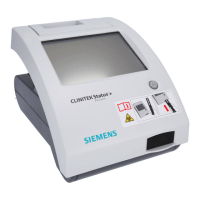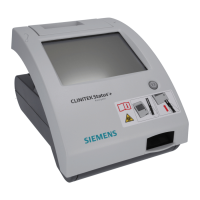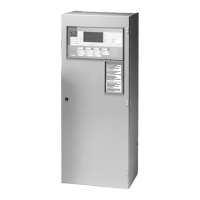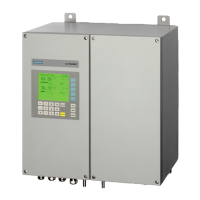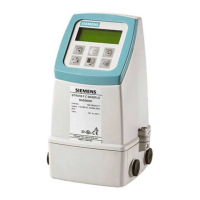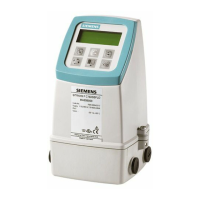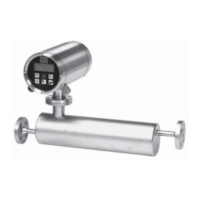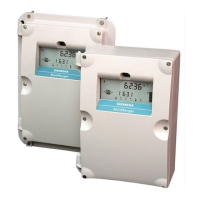Clinitek Advantus Operator’s Guide 15
Overview and Intended
Use
Operating Sequence
If specimen IDs are not used and color/clarity results are reported and
displayed, the analyzer automatically enters the Run mode when you place a
strip on the fixed platform. A sensor detects the strip's presence and activates
the strip movement and reading cycle.
If the push bar is positioned at the left side of the loading station, the analyzer
is ready to accept placement of a strip. If the bar is positioned to the right, the
analyzer is not ready and ignores any strip placed on the platform.
If the analyzer is already in the Run mode and you place a strip on the
platform, there may be delay of up to 7 seconds before the push bar moves.
The amount of delay depends on the status of the timing cycle for the strips
currently being analyzed.
The push bar moves the strip along the loading station to the read area. The
sequence number increments. A series of pins move the strip across the
platform at a rate of about 1.3 cm (1/2 inch) every 7 seconds.
Two readheads, located inside the read area, scan the length of each reagent
strip at a specific time in the incubation cycle. The first readhead reads the
reagent areas requiring shorter incubation times. The second reads those
requiring longer incubation times.
Each of the 2 readheads contains an incandescent lamp and photodiode
pack. When a strip moves into position under the readhead, the analyzer
performs a calibration cycle. The readhead then scans the entire length of the
strip, measuring the light reflectance of each reagent pad. A portion of the
light striking the pad is reflected back to the photodiode pack. The light
reflected at specific wavelengths from the test pad is dependent upon the
degree of color change in the pad and is directly related to the concentration
of the particular constituent in the urine.
The photodiode pack contains 4 filters, one each at 400 – 510 nm (blue),
510 – 586 nm (green), 586 – 660 nm (red), and 825 – 855 nm (IR). The light
intensity detected by the photodiode pack is converted into electrical
impulses, which are processed by the analyzer’s microprocessor and
converted into clinically meaningful results.
The pins continue to move the strip along the platform until it drops into the
waste bin.
An internal thermal printer prints the test results, if this option is selected. You
can also send the results to a computer and a form or 80-column printer.
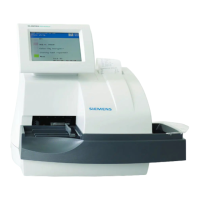
